Despite its charm, international travelers often overlook the city of Osnabrück. Most people visiting the region usually prefer to explore nearby Münster; somehow, Osnabrück remains in the shadow. However, the city’s history is rich, and there are plenty of things to do in Osnabrück. Therefore, I can only encourage you to add the city to your German itinerary and visit Osnabrück even for a day.
In this travel guide to Osnabrück, you’ll read about the top things to see in the city. Moreover, I’ll share how you can reach it and the best places to stay if you decide to spend a few nights there. Although there are livelier cities in the area, the location of Osnabrück, together with the affordable prices, makes the city an ideal base.
So, let’s start with the best things to do in Osnabrück.
*Some of the links are affiliate links. It means that if you buy something, I might earn a small commission at no additional cost to you.
The best things to do in Osnabrück, Germany
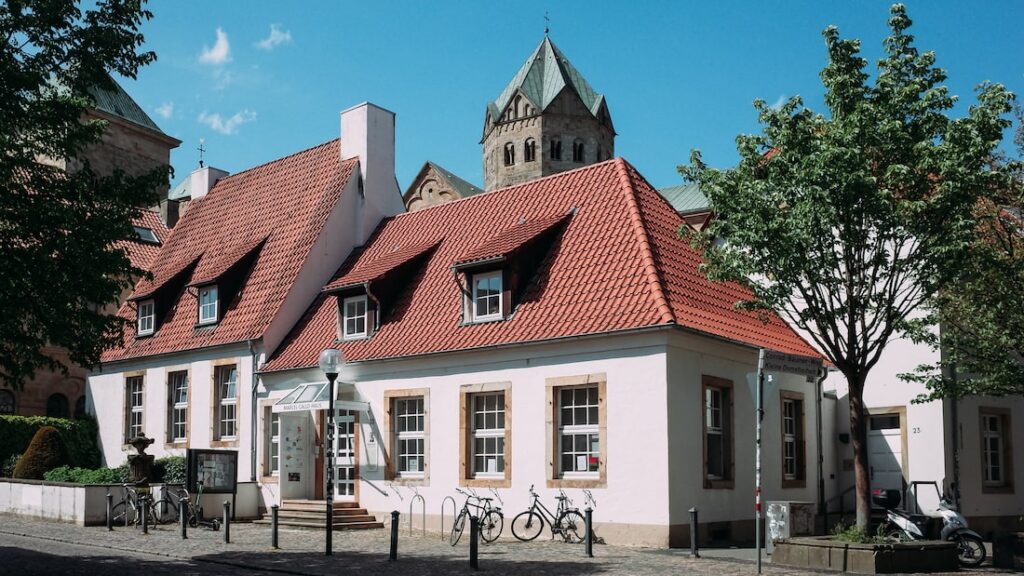
Located in Lower Saxony and being one of its biggest cities, Osnabrück is home to 170,000 inhabitants. Charlemagne founded the Diocese of Osnabrück in 780 AD, and the city became one of the most important trading routes during the Middle Ages. To highlight its significance in the treaty that terminated the Thirty Years’ War, Osnabrück is also dubbed Friedenstadt (“City of Peace”).
As you can easily imagine, a city so rich in history offers a variety of places to see. So, here are the best things to do in Osnabrück.
Visit the Schloss Osnabrück

Initially built as the residence of the protestant prince-bishop Ernst August I, the Osnabrück Castle (German: Schloss Osnabrück) is one of the most beautiful buildings in the city. However, its story was not always shiny. From 1728 it remained unused for a long time, and it was not before 1803 that it was used for administrative purposes. During the Nazi regime, the Castle housed Gestapo interrogations and prison cells.
The Osnabrück Schloss was almost entirely destroyed during World War II and had to be rebuilt. While the exterior is identical to its prewar look, the interior is significantly different. Since 1974, the Osnabrück Castle hosts the city’s university.
If you happen to be there during the weekend, don’t miss the chance to visit the Gestapo rooms and the memorial. Admission is free, and there’s a permanent exhibition called “Police brutality and enforced labor.” You can visit the memorial independently, but you can also pre-book a guided tour.
Visit the Felix Nussbaum Haus
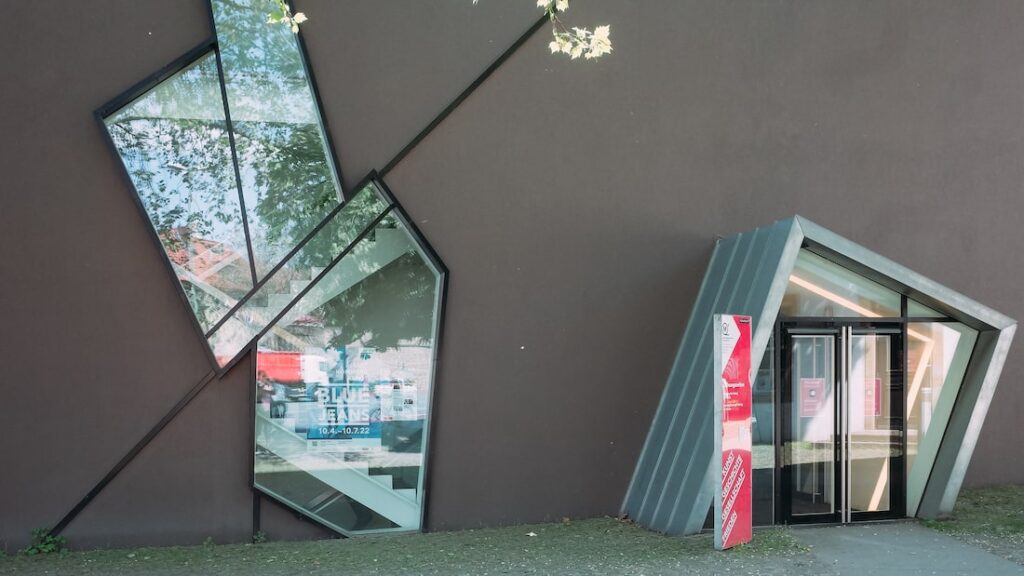
The Felix Nussbaum Haus is one of the city’s landmarks. The museum hosts the paintings of German Jewish painter Felix Nussbaum, featuring an exhibition space that focuses on racism and intolerance. Murdered in the Holocaust, Felix Nussbaum became a synonym of Osnabrück.
The building hosting the museum is an architectural masterpiece created by Daniel Libeskind. It was concluded in 1996 and was actually Libeskind’s first completed work. The famous architect imagined a “Museum without Exit,” and indeed, it is one: its structure is labyrinthine, and the visitor will come across several dead ends. Moreover, there’s high symbolism on the museum’s four sides. Three of them face the cities where Felix Nussbaum studied (Berlin, Rome, and Hamburg), while the fourth face the concentration camp where he died (Auschwitz).
Visiting the Felix Nussbaum Haus is among the best things in Osnabrück. You can find more info about the opening times and current exhibitions on the museum’s official website.
Cross the Heger Tor

The Heger Tor is a war memorial opposite the Felix Nussbaum Haus. After crossing the Heger Tor, you’ll enter the Old Town of Osnabrück; however, this tall gate commemorates an important moment of local history.
Even though the locals usually refer to it as Heger Tor, its name is actually Waterloo Tor (Tor stands for Gate). As its name suggests, the arch is dedicated to the Battle of Waterloo, which took place on June 18, 1815. The armies of the Seventh Coalition defeated the French army under Napoleon. Many Osnabrück soldiers fought on the battlefield, and a year after the victory, in 1816, Gerhard Friedrich von Gülich donated 1,000 thalers to construct a war memorial. The memorial was, of course, the Heger Tor.
This triumphal arch follows the style of the Arch of Titus in Rome and features ionic pillars on both sides. The name Heger Tor is actually a reference to the city’s old fortification. If you’re exploring Osnabrück, the chances are that you’ll cross it a couple of times: it’s an urban “border” separating the old and the new city.
Explore the Marktplatz

Located in the Old Town’s heart, the Marktplatz is probably Osnabrück’s most famous spot. Market Square also hosts several restaurants and cafes beside the landmarks you’ll see below. If you want to see and be seen, that’s the place in Osnabrück. Grab a drink and see the local life unfolding.
Regarding the monuments and landmarks, here’s what you can see:
See up close a peace treaty
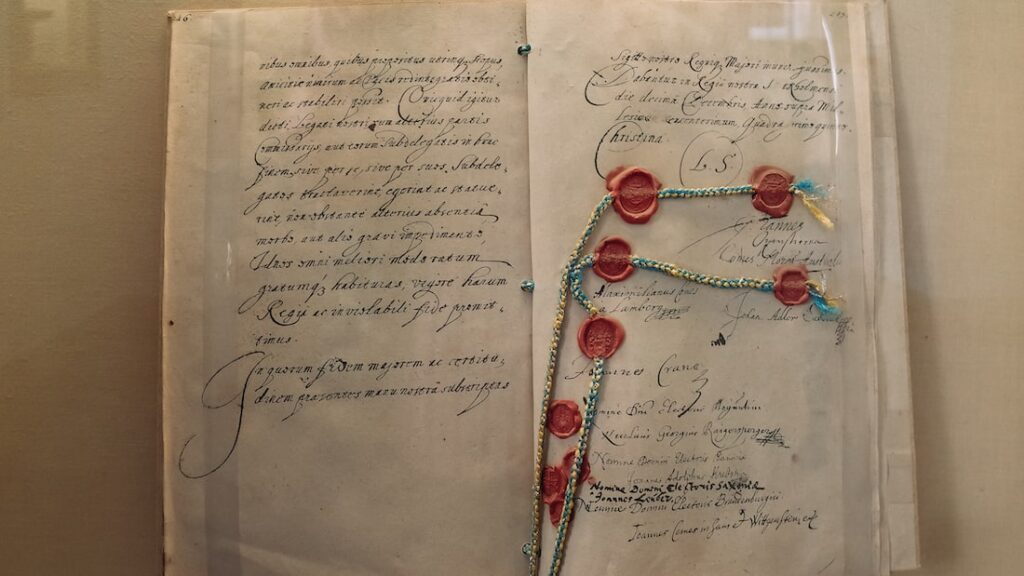
Even though we often read about peace treaties in history books, we don’t usually have the chance to see one up close. However, in the Osnabrück Town Hall (German: Rathaus Osnabrück), you actually have the opportunity to see one. The Peace of Westphalia is the name of two peace treaties signed in October 1648: in Osnabrück and Münster. These peace treaties ended the Thirty Years’ War (1618–1648) and the Eighty Years’ War (1568–1648). Eight million people died in these wars, and the treaties finally brought peace to the Holy Roman Empire.
The entrance to the Town Hall of Osnabrück is free, and you can see the Peace Treaty on display in the room on your right.
The Erich Maria Remarque Peace center

The city’s most prominent son is Erich Maria Remarque, the iconic writer of “All quiet on the Western front.” Born in Osnabrück in 1898, Remarque’s writing was sealed by Germany’s 20th-century history. The Erich Maria Remarque Peace Center hosts the writer’s archive and also an exhibition. It’s open to the public, and you can find it at Markt 6, straight at the Marktplatz. See more on the Remarque-Center website.
If you’d like to read some of his books, you can find Remarque’s book in English on Amazon.
See the Marienkirche

You’ll see the impressive Marienkirche (Saint Mary’s Church) straight opposite the Remarque peace center. This Lutheran church in the heart of Osnabrück’s old town is the oldest in the city. Apart from its architectural interest and religious significance, the church features an Organ created by Dutch organ builders Flentrop in 1967.
Enjoy a day out of Osnabrück & visit the Draiflessen Collection
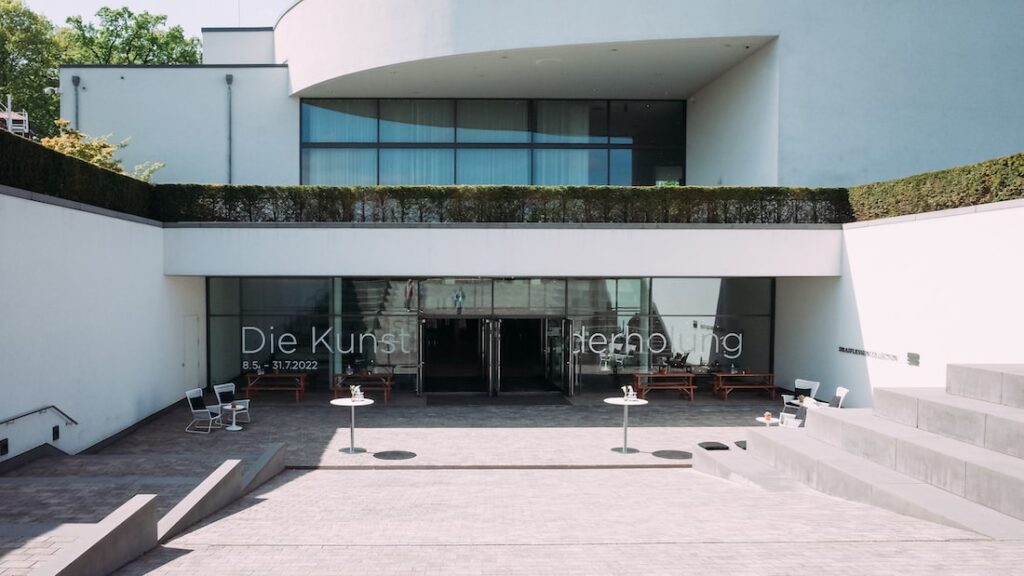
The Draiflessen Collection is one of the most sophisticated German museums. Located just half an hour from Osnabrück in Mettingen (you can reach it by bus or car), the Draiflessen Collection is a must-see for art lovers. The exhibitions are truly fascinating, and a day out of Osnabrück will expose you to nature’s beauty, especially if you visit during spring or summer.
The museum is hosted in a beautiful building in the middle of the small town of Mettingen. Visiting the museum is one of the best things to do near Osnabrück, and it’s a great short excursion if you’d like to explore the area further. You can find more information on the website of the Draiflessen Collection.
I visited the museum twice and wrote about two of its exhibitions. Specifically, you can read about The Art of Replication and also about Faith.
Soak up some art at Kunsthalle Osnabrück

Since we talk about art, Osnabrück hosts a beautiful art center close to the Old Town. The Kunsthalle Osnabrück is not your typical museum: it shows art in a church. While the church is more than 700 years old, since 1992, it has been transformed into an art center where contemporary artists present their work. Equally contemporary are the exhibition topics, featuring questions about society, norms, and modern living.
Admission is free, and you can find Kunsthalle’s current program here.
Walk the Witches’ Street in Osnabrück (Hexengang)

You’ll find the Witches’ Street (German: Hexengang) behind the famous Dom Sankt Petrus Cathedral. This tiny street is surrounded by tall walls and feels somewhat claustrophobic. The origin of the name remains uncertain, and some sources claim it refers to imprisoned witches in the nearby Bucksturm in the 16th and 17th centuries.
Even though there’s not much to see, it definitely deserves walking the Witches’ Street if you love dark tourism. Witch-hunting occurred in Osnabrück between the early 1560s and the late 1630s, a time of social unrest due to religious wars. During this period, almost 280 people were executed in Osnabrück with wizardry charges, nearly all of whom were women. No doubt, that’s one of the oddest things to see in Osnabrück.
Admire the Ledenhof

Once the house of the noble family von Leden, the Ledenhof houses today the German Foundation for Peace Research. That’s one of the city’s most beautiful and historic buildings and lies opposite Schloss Osnabrück. That’s a so-called Steinwerk (stone structure), and in its initial use back in the 14th century, it probably served as a warehouse. Don’t miss the chance to admire the Ledenhof and shoot some photos; it’s one of the most beautiful buildings in Germany.
Observe the city’s statues

Osnabruck is home to an impressive number of statues for a city this size. While it doesn’t make sense to make an Osnabrück itinerary following its statues (…or does it?), if you decide to walk to the Pernickelmühle, it deserves to see two of them.
The first one is the Haarmannsbrunnen, a memorial dedicated to the miners of Osnabrück. This statue fountain dates back to 1909, and it’s one of the oldest workers’ monuments in Germany. It has the name of its founder, August Haarmann. According to Haarmann, the fountain “represents a worker who has drilled a spring and enjoys his work by watching the running water.” The water pours out of the bronze figure whenever the monument is operating and flows into the fountain.
As for the second statue, it lies close to the Haarmannsbrunnen, but it’s definitely odder. Initially called the “Fountain of Wishes,” this statue features a bronze figure in a police uniform who urinates on the Hase River. For obvious reasons, the locals now call it the “Osnabrück Manneken Pis” for obvious reasons.

Relax next to the Pernickelmühle and the Pernickelturm

The Pernickelmühle is the former mill of the Osnabrück bishop. Located on the northern side of the Old Town, the Pernickelmühle is mentioned in documents of the 13th century. Next to it, you’ll see plenty of locals unwinding at the beautiful park straight at the Hase River.
Do it like the locals at the Redlingerstrasse and the Adolf Reichweinplatz
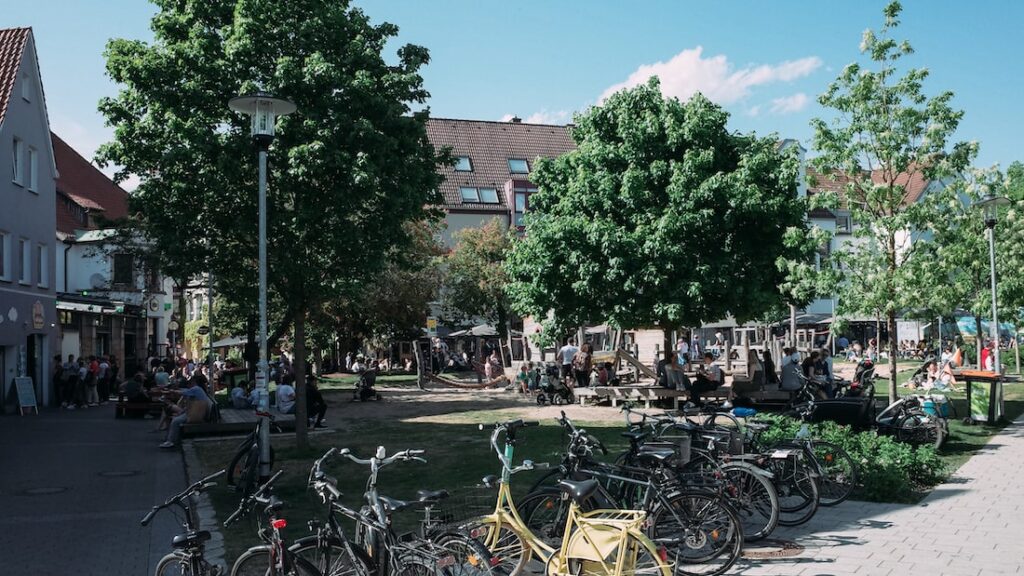
It doesn’t get more local in downtown Osnabrück. After a long day of sightseeing, it’s time to have lunch and enjoy a drink. Yes, the Marktplatz is beautiful, but if you want to do it like the locals, stop at Redlingerstrasse and the nearby Adolf Reichwein square. You’ll find plenty of cafes and small restaurants. These two spots are probably the nicest in the city’s center, and you can taste local delicacies.
Find a place at Barösta Kaffeehaus, Snackwunder, or the Grüner Jäger and enjoy a lazy afternoon. Alternatively, hang out at the part at Adolf Reichweinplatz with a beer bottle and observe life.
How to get to Osnabrück
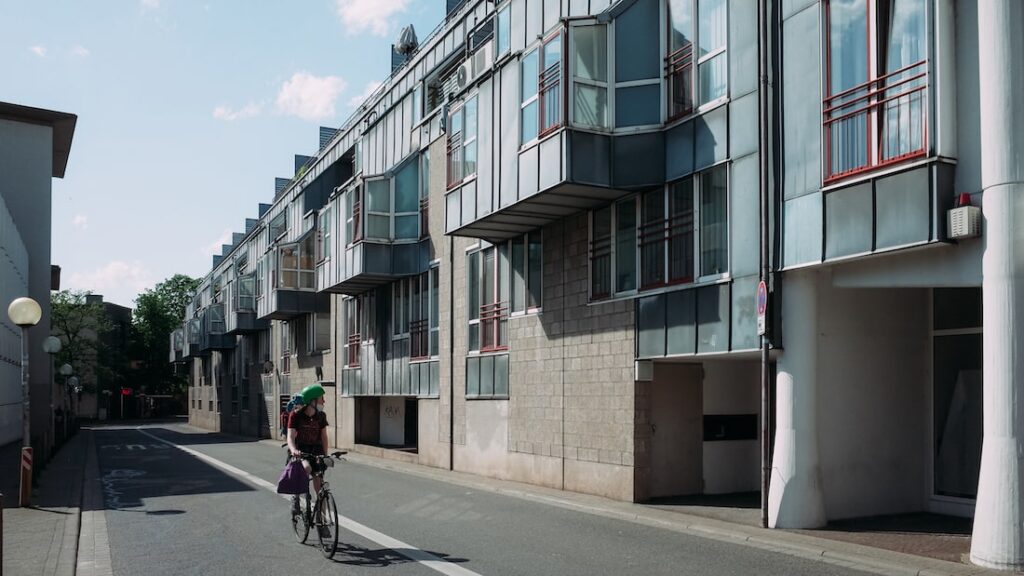
Osnabrück is well connected with most major cities of northern Germany. In my opinion, the best way to reach the city is by train. However, I’ll write here the three alternatives you have. These are:
By plane
Even though that’s not the most common way to reach it, Osnabrück shares an airport with nearby Münster. The International Airport of Münster-Osnabrück is not the busiest German airport, but it can be helpful if you want to visit the area.
Kiwi, the best flight aggregator, can help you find the best itineraries from your hometown to the airport.
By train
The best way to travel around Germany is by train. The Deutsche Bahn has an extended network, and trains stop at every corner of the country. As I wrote earlier, you can visit Osnabrück from most cities in northern Germany. There’s also a direct train connecting Berlin and Amsterdam that stops daily at Osnabrück. If you plan to travel between the two capitals, you might consider stopping in Osnabrück to make the journey more enjoyable.
Booking your train trip in advance is a must in Germany: the trains are usually full, and if you book early, you can find very cheap tickets. Simply visit bahn.com, add your itinerary and travel dates and find the best prices for your journey.
Alternatively, if you’d like to explore the Lower Saxony region, you can get a Niedersachsen-Ticket that guarantees unlimited travel. If you plan to use the German trains a lot, I wrote a comprehensive guide on how to make the most out of the Deutsche Bahn tickets.
By car
You can, of course, rent a car and go on a road trip to Germany. That’s another excellent option, and the prices are competitive even during the peak season. To find the best car prices in Germany is better to use an aggregator -I always book via RentalCars. It combines the prices from local and international car rental companies, and you’ll instantly get a quote.
You can find the best prices for renting a car in Germany here.
The best hotels in Osnabrück

In the last section of the Osnabrück travel guide, I’ll share the best hotels in the city. Even though most people visit Osnabrück on a day trip, if you’re on a low budget, the prices here are far more competitive than in nearby cities. Moreover, there are plenty of charming hotels to choose from, some of which are centuries old.
Every hotel in this list is located downtown, in the Old Town. I believe that’s the best place to stay in Osnabrück. If you’d like to explore more accommodation options, please use the interactive Osnabrück map after the list; Innenstadt refers to the Old Town.
So, the best hotels in Osnabrück are:
Romantik Hotel Walhalla. That’s hands down the best place to stay in Osnabrück. The Romantik Hotel Walhalla is a historic timber-framed building dating back to 1690. It offers modern rooms just steps away from the Marktplatz and serves a delicious breakfast buffet every morning. Moreover, it has a summer terrace and a sauna for its guests. See the prices for Romantik Hotel Walhalla.
Dom Hotel. Located just 200 meters away from Dom Sankt Petrus, the Dom Hotel is one more excellent option for your Osnabrück stay. The rooms are spacious and modern, and breakfast is included. See the Dom Hotel.
Bergmann Boardinghouse. The Bergmann Boardinghouse is a fantastic accommodation option if you’re more into self-catered apartments. Located also in the city’s pedestrian zone, it features rooms with a kitchenette, air-conditioning, and flat-screen TV. See the Bergmann Boardinghouse.
Holiday Inn Osnabrück. Finally, if you enjoy a touch of luxury in your holidays, the Holiday Inn Osnabrück guarantees a great stay downtown. It has everything you expect from a hotel of these standards: a restaurant, a fitness center, a bar, and a shared lounge. See the Holiday Inn.
Budget option
If you love a more local feeling, I can recommend Hotel Klute. This small hotel is a couple of meters away from the Heger Tor and offers clean rooms, incl. breakfast. You won’t find luxury here, but this small hotel is an excellent option if you’re on a budget. Nothing is that far away in Osnabrück, and you’ll have a home feeling. Check the Hotel Klute.
Final thoughts about Osnabrück, Germany

Osnabrück is a city that travelers usually ignore. However, I recommend stopping here if you’d like to see a typical German city full of history and charm. Apart from the things to do in Osnabrück that I mentioned above, you’ll also find a Botanical Garden (German: Botanischer Garten) and a Zoo close to the city center. And, if you want to see the city at its liveliest, you can also visit it during the Maiwoche: for two weeks in May, the city transforms into an open-air music festival full of bands, food, and beer.
All that said, if you’d like to see local life unfolding in front of centuries-old buildings, see a peace treaty up close, and enjoy some relaxed days, Osnabrück is an excellent choice. Despite being an underrated German city, I truly believe it deserves a day or two, especially if you’re on a road trip to Germany.
More Germany: Berlin, A market in Frankfurt
Pin it for later

Sharing is caring: share this article about the best things to do in Osnabruck with your friends.
Last Updated on June 11, 2022 by George Pavlopoulos


